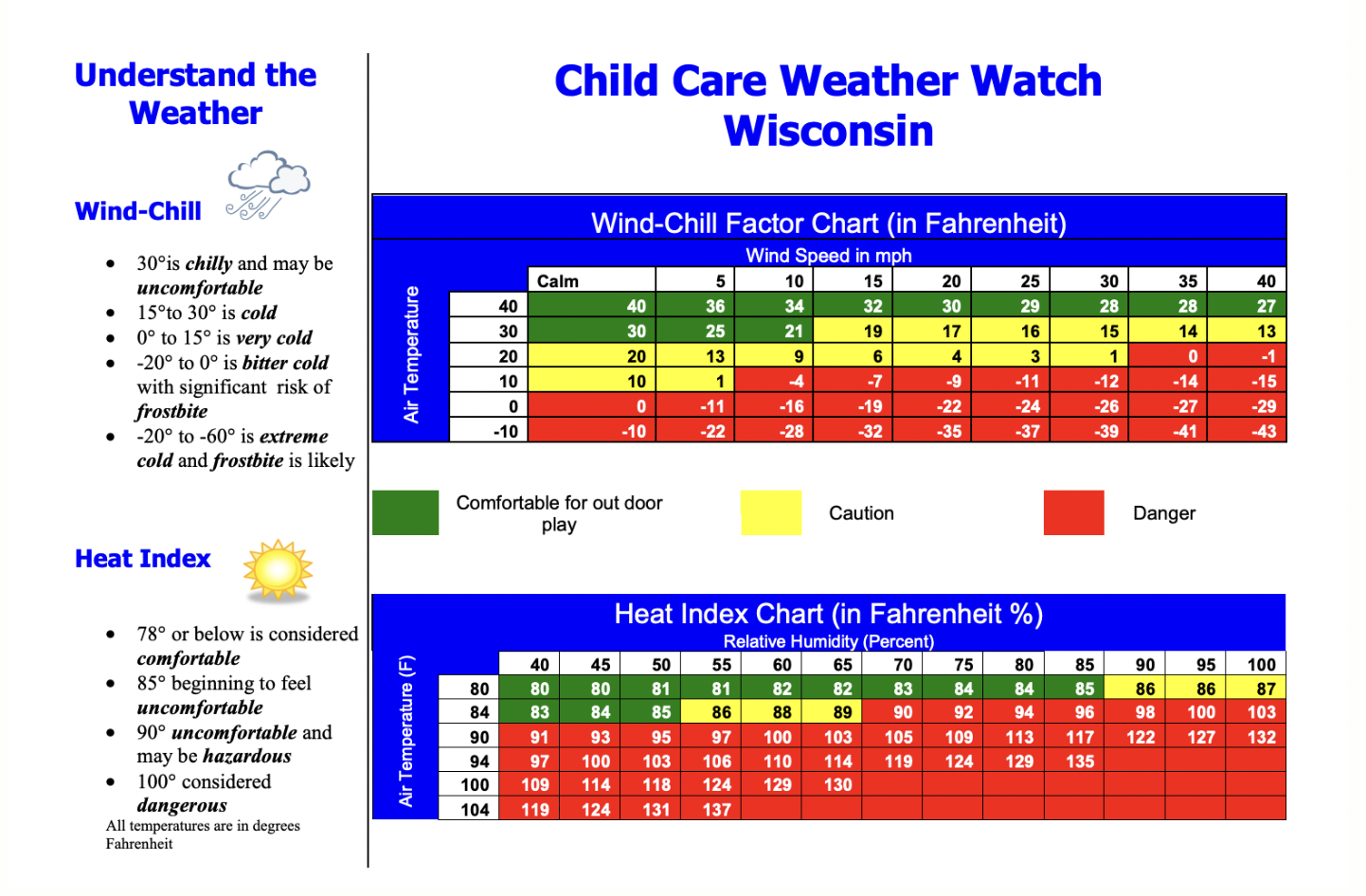Weather Watch
Although we love the Scandinavian saying, "There is no such thing as bad weather, only bad clothing," we nevertheless believe that there are extremes in which outdoor learning is too challenging to support safely. To follow are the practices we use to manage the most common weather extremes.
Lightning
When there is a credible threat of lightning in the forecast, we either adjust our plan to stay near a safe structure or stay indoors altogether until the storm has passed.
Air Quality
At times, increasingly recently, we need to make choices in response to the air quality in our area. It helps to use resources like this matrix from Spare the Air. Given how long class is (60 minutes), you can use the "PE (1hr)" row of the chart to consider how vigorous the movement or physical activity should be within the lesson given the Air Quality Index in your area during class.
Reference the chart's recommendations to see if and how you will need to adapt. When air quality levels are extreme (Very Unhealthy), or if families collectively share their discomfort with being outdoors due to the current air quality, you can offer to cancel or reschedule your session (within one week after the original end date).
Reference the chart's recommendations to see if and how you will need to adapt. When air quality levels are extreme (Very Unhealthy), or if families collectively share their discomfort with being outdoors due to the current air quality, you can offer to cancel or reschedule your session (within one week after the original end date).
When is it Too Hot or Cold?
Sometimes the temperature and humidity alone make kids unsafe and learning time unproductive. So, how do we decide when it is too hot or too cold for kids to go out?
Even though the primary colors are a bit much for our tender eyes, we find this nifty chart helpful when we need to determine which days are just too hot or cold for safe learning.

This chart is not the only tool to use, and charts like this actually can vary by region—what is too cold is somewhat subjective. Use this chart combined with any local weather warnings and your own instincts about how families are feeling about risks and how prepared they are with proper clothing. The right gear is the true key to enjoying hot and cold days outdoors.
If helpful, you can download the Wisconsin chart above here. Continue reading below for more information about how to read the chart.
GREEN: Dressed well, children can play outdoors and be comfortable/safe. As always, we should watch for the child that becomes uncomfortable while playing outdoors.
- INFANTS AND TODDLERS Infants/toddlers are unable to tell the child care provider if they are too hot or cold. The infant/toddler may become fussy when uncomfortable. Dress infants/toddlers in lightweight cotton or cotton-like fabrics during the warmer months. In cooler or cold months, dress infants in layers to keep them warm. Protect infants from the sun by using sunscreen, hat and playing in shaded areas. Give beverages while playing outdoors.
- YOUNG CHILDREN Use precautions regarding clothing, sunscreen and beverages. Young children need to be reminded to stop play and drink a beverage and apply more sunscreen.
- OLDER CHILDREN Use precautions for clothing, beverages and sunscreen. The older child needs a firm approach to wearing proper clothing for the weather (they may want to play without coats, hats or mittens). Apply sunscreen and give beverages while outdoors.
YELLOW means the child care provider must use caution and closely observe the children for signs of being too hot or cold while outdoors. Clothing, sunscreen and beverages are important. Shorten the length of outdoor time.
- INFANTS AND TODDLERS Infants/toddlers are unable to tell the child care provider if they are too hot or cold. The infant/toddler may become fussy when uncomfortable. Dress infants/toddlers in lightweight cotton or cotton-like fabrics during the warmer months. In cooler or cold months dress infants in layers to keep them warm. Protect infants from the sun by using sunscreen, hat and playing in shaded areas. Give beverages while playing outdoors.
- YOUNG CHILDREN Use precautions regarding clothing, sunscreen and beverages. Young children need to be reminded to stop play and drink a beverage and apply more sunscreen.
- OLDER CHILDREN Use precautions for clothing, beverages and sunscreen. The older child needs a firm approach to wearing proper clothing for the weather (they may want to play without coats, hats or mittens). Apply sunscreen and give beverages while outdoors.
During RED conditions AND a number 0 or lower, most children should play outdoors for shortened brief periods of time and play indoors for long periods of time.
- INFANTS, YOUNG CHILDREN and OLDER CHILDREN may play outdoors for short periods of time. Child care providers must be vigilant about proper clothing, beverages and use of sunscreen/hat in the heat.
- Whether your temperatures fall in the Green, Yellow or Red zones, please be sure to remind families to make sure that they dress appropriately, especially for cold. Without the proper gear, any of these temperatures could be considered inappropriate and even unsafe.
- Once you have decided whether or not it is safe weather for play, please be sure to communicate with your families about whether or not you are having class.
*The Wisconsin Child Care Weather Watch chart was produced by the Wisconsin Department of Public Health. Wind-Chill and Heat Index information is from the National Weather Service.